Machu Picchu, a Wanderlust Destination
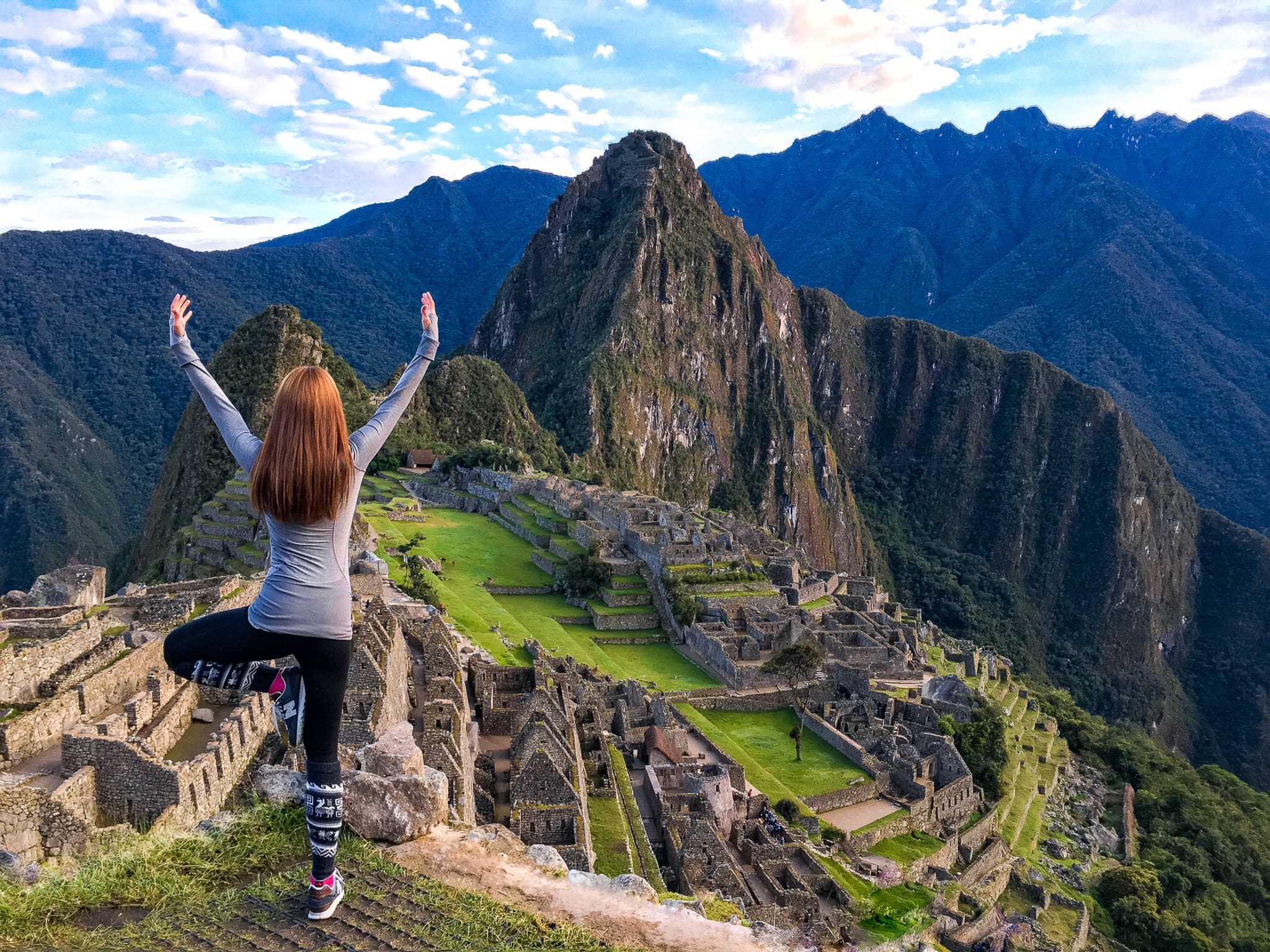
Machu Picchu is at the top of many traveler’s bucket lists & is an archaeologist’s dream destination. Visitors claim to experience an incredibly deep spiritual connection with the cosmos as they walk down its stone paths & become immersed within the massive granite structures. Often referred to as “The Lost City of the Incas,” it is one of the most awe-inspiring set of ruins & aptly a World Wonder. In 1983, UNESCO classified Machu Picchu as a World Heritage Site due to its immense natural & cultural attraction. Despite the establishment of new visitation regulations, the number of visitors still continues to grow each year.
Please note: This post contains affiliate links.
This means that, at no extra cost to you, I may receive a small commission if you make a purchase through my affiliate link.
You may read my full disclosure policy here.
History books credit Hiram Bingham as the first Westerner to publish the existence of Machu Picchu back in 1911. Initially, his expedition was in search of the last Inca stronghold of Vilcabamba. However, they came upon farming locals who led them into the heavily vegetated site of Machu Picchu instead. Despite his amazing “discovery,” Bingham received negative criticism when he returned to Yale University with numerous ancient artifacts. These included mummified remains, ceramics, & precious metals. The Peruvian government petitioned against the university to reclaim what rightfully belonged to the country. After many years of negotiation, the two countries signed a Memorandum of Understanding in 2008 which granted Peru full ownership of the artifacts. This agreement also allowed the United States to showcase their treasures through educational programs.
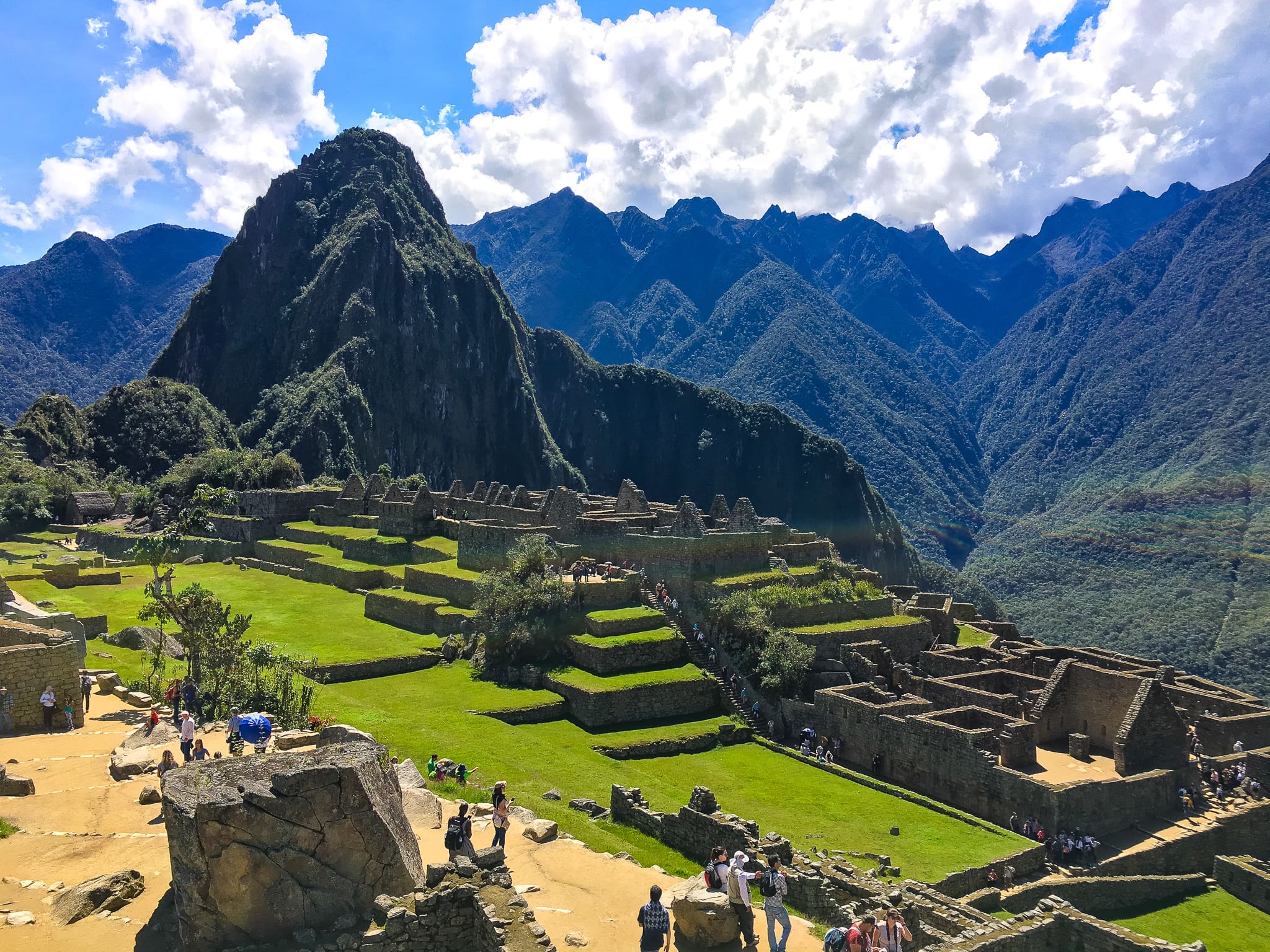
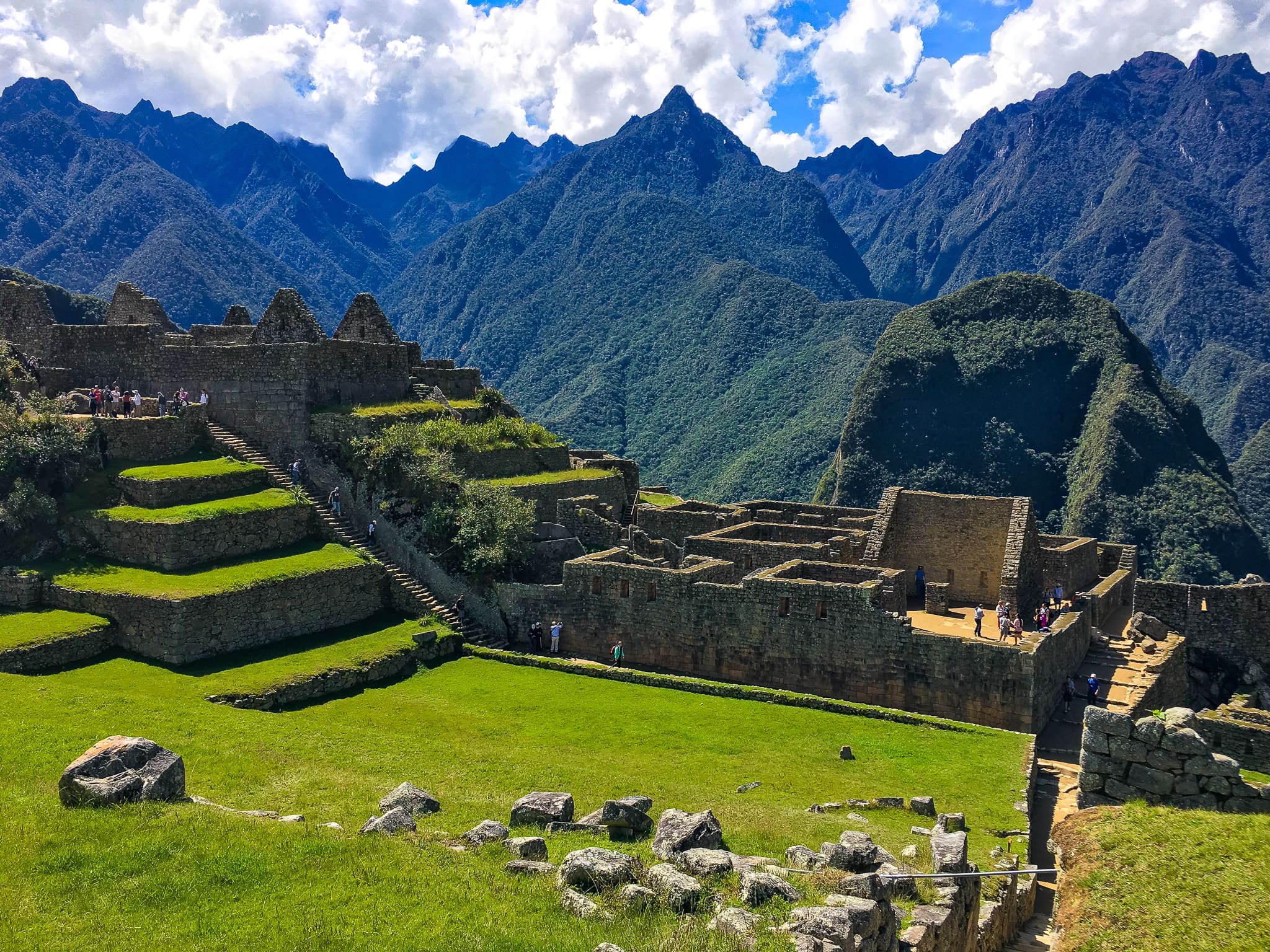
Spend a Night at Aguas Calientes
Aguas Calientes, also known as Machu Picchu Pueblo, is a quaint little town & the only access point into the famous ruins. To get to this remote town, we took the PeruRail from Poroy Station near Cusco, as there are no other roads that lead into the area. The 90 minute train ride took us through beautiful countryside landscapes & mountain ranges. Upon arrival, we checked into our hotel, purchased our bus tickets, & enjoyed the rest of the evening restoring our energy.
Hire a Local Certified Guide
Initially, we had planned to explore Machu Picchu on our own. But after speaking with our hotel concierge, we got in connection with a private certified tour guide. Doing the research beforehand through travel books & online websites wasn’t enough to fulfill our educational needs. Although there are wooden markers that help direct you on the correct path, there are no other explanatory signs. Investing on a well versed guide can provide you with a valuable history lesson on the ancient ruins. You can find a professional through various tourism offices or even hire one at the gates to Machu Picchu. But continue reading to find out why this is now mandatory.
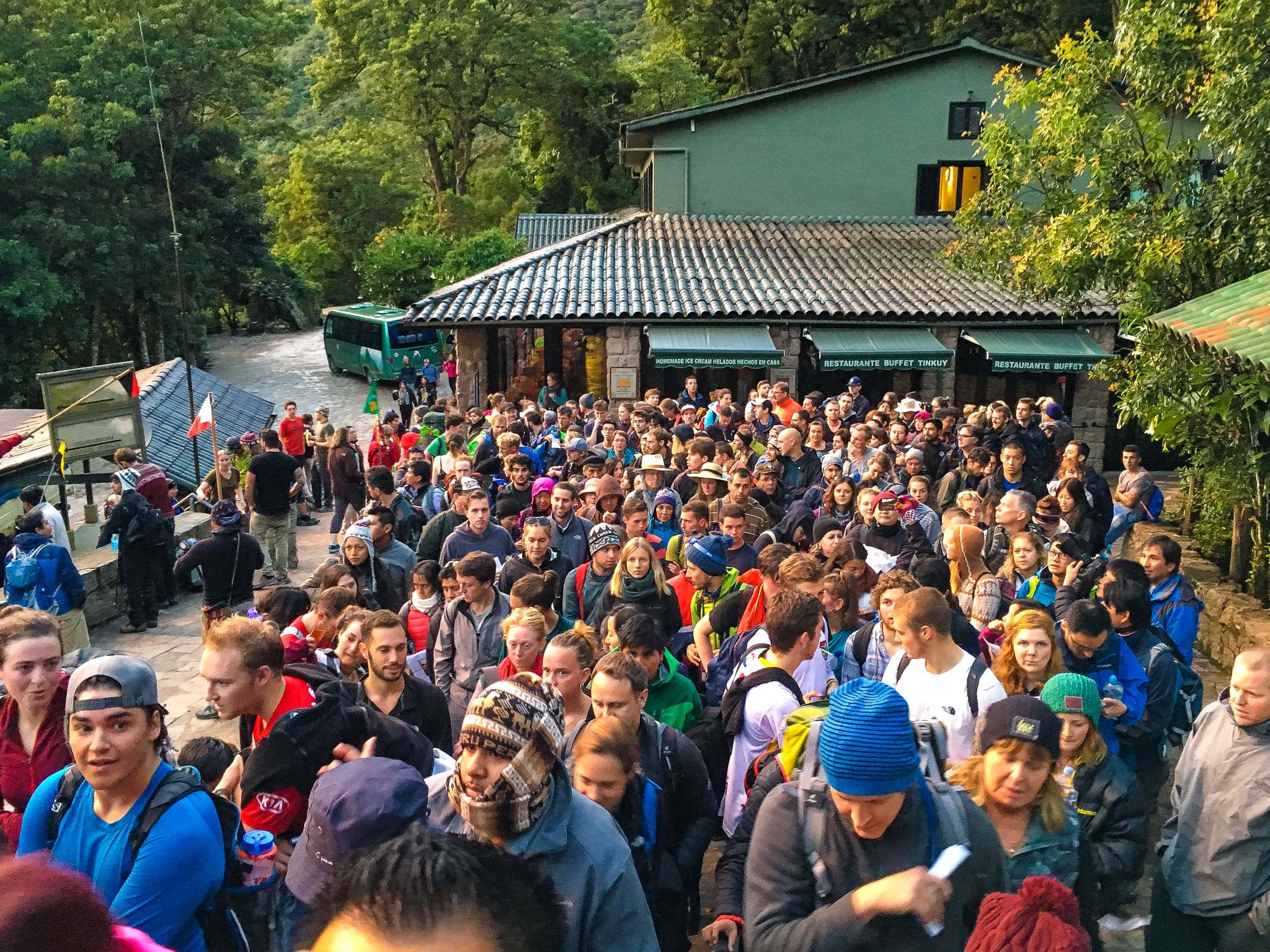

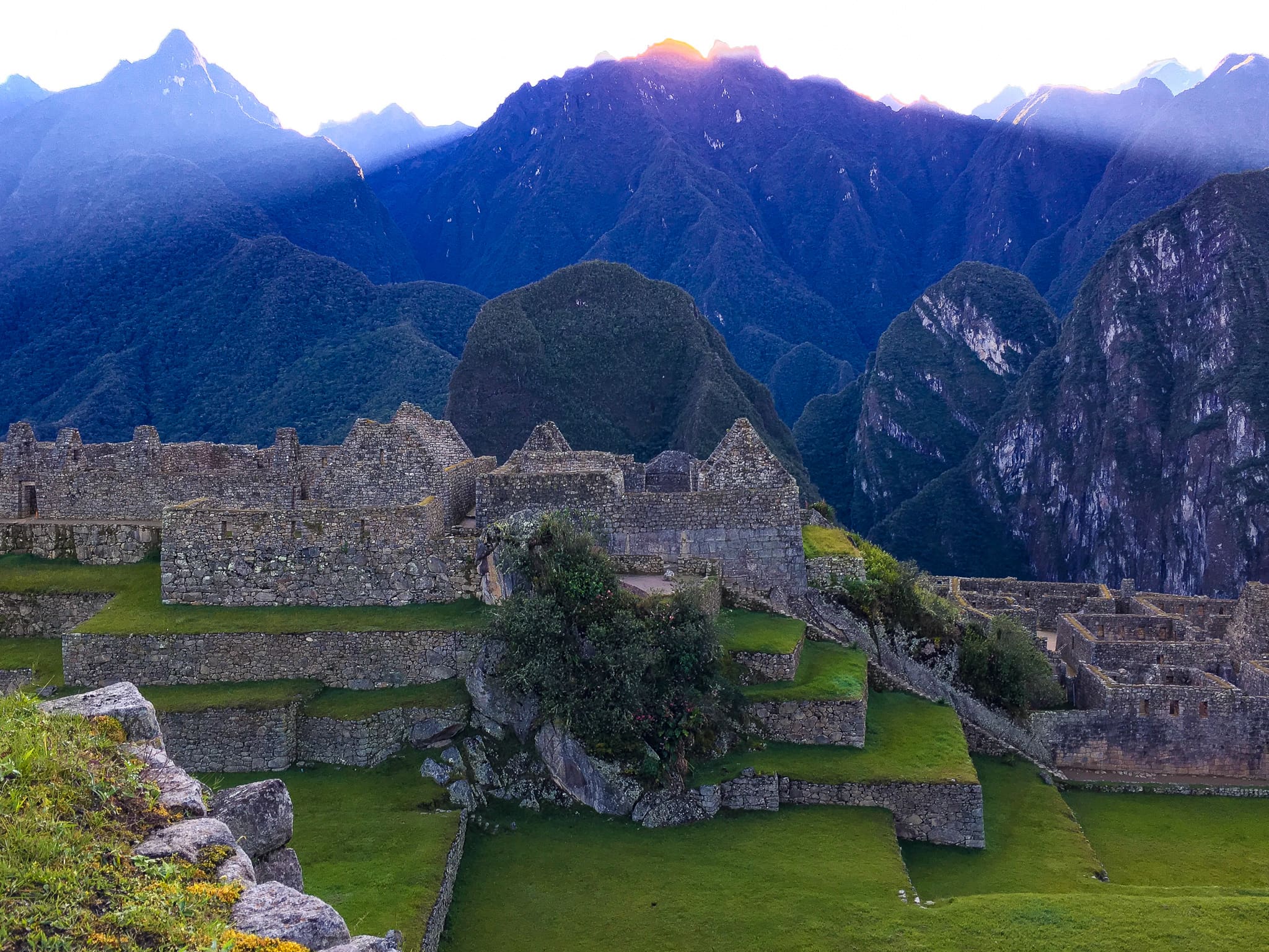
Purchase Tickets in Advance
Tickets for Machu Picchu are limited to 2,500 per day & they sell out fast, especially during the peak seasons of June through August. Although you can take your chances & purchase tickets in Cusco or Aguas Calientes, it is highly recommended you get them months in advance online through the Ministry of Culture. If you have trouble with their website, there are other reliable third-party vendors through which you can book from. Note that there is no option to buy tickets at the front entrance.
There are new rules defining 3 one-way circuits, or routes, that visitors must choose from when purchasing their tickets. This is to prevent visitors from wandering off the designated pathways & overexposing the already fragile ruins. Those up for a challenge can purchase a combination ticket that allows access up either Huayna Picchu Mountain or Machu Picchu Montaña. Keep in mind, both routes are considered strenuous hikes with steep, narrow inclines & they must be completed in less than 4 hours. Find out more information here.
New Visitation Rules to Preserve the Ruins
A lot of guidelines have changed since our last visit in May 2017. Due to the significant rise in tourism, Peru’s government has announced new entrance rules effective July 1, 2017. By modifying its visitation practices, the country hopes to reduce overcrowding, degradation of the ruins, & to better preserve its long-term sustainability.
There are now two specific entrance times:
- AM entrance from 6:00am – 12:00pm
- PM entrance from 12:00pm – 5:30pm
Visitors are only allowed to enter during one time period & cannot re-enter once they have left the site. More notably, all visitors must be accompanied by a licensed guide & they need to present a valid guide identification upon entrance. Larger tour groups may only have a maximum of 16 people. In addition, there is an updated list of common travel items that are now prohibited. These include walking poles (unless medically necessary), large backpacks, baby strollers, umbrellas, drones, selfie sticks, & even camera tripods.

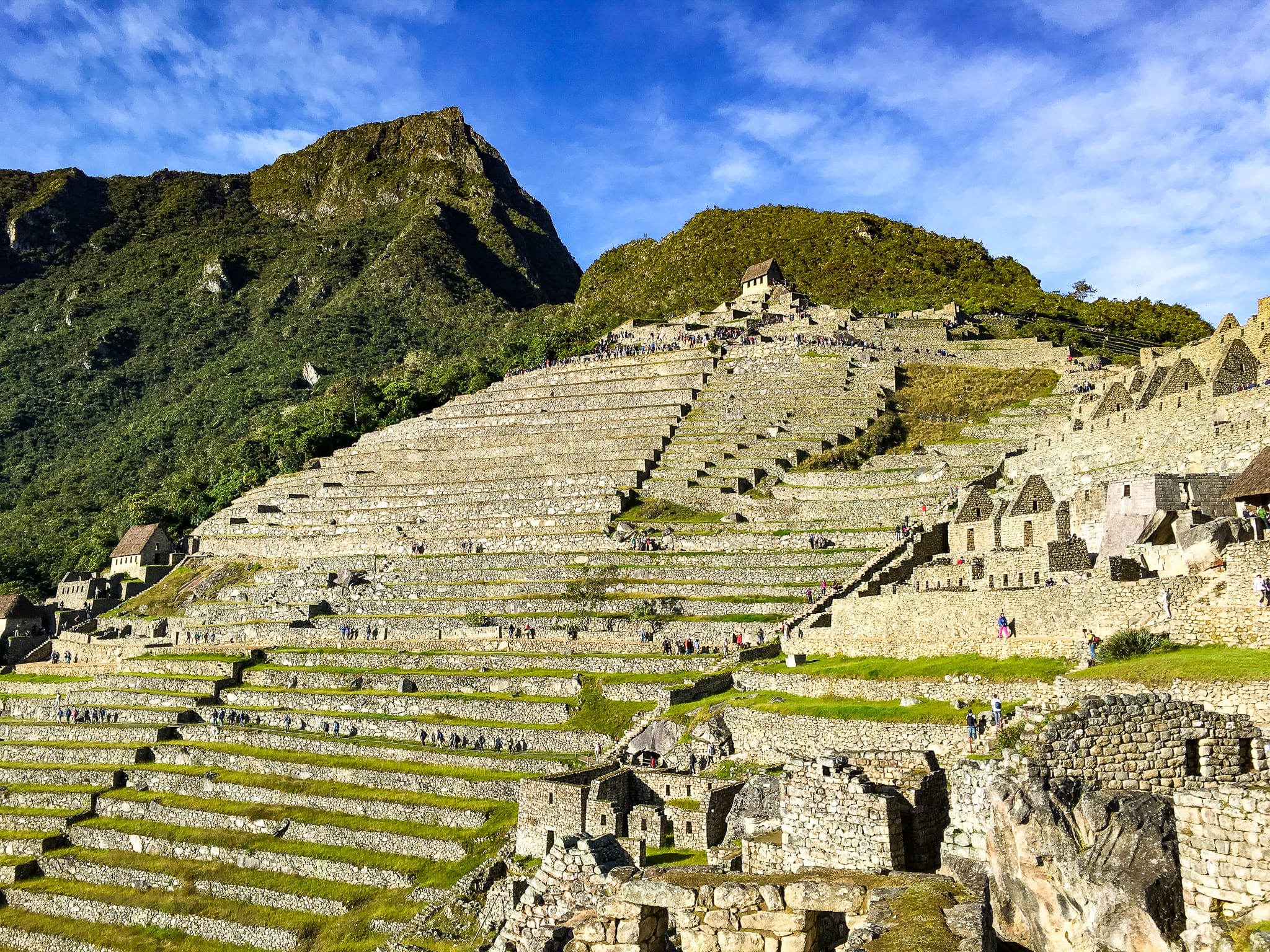
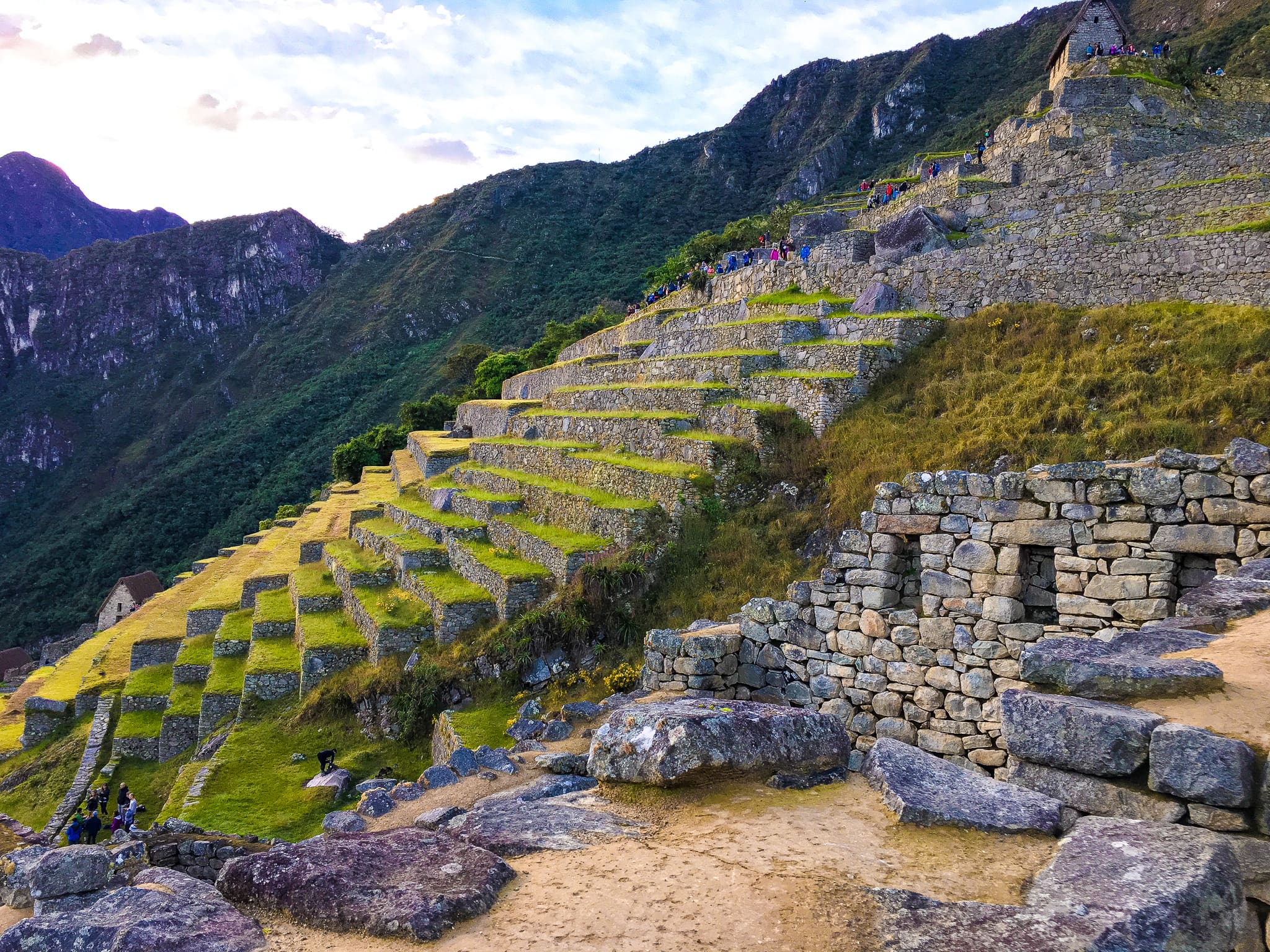
The Early Bird Catches the Bus
We woke up early the next morning to catch the first round of buses which was to depart at 5:30am. However, even as we got there two hours in advance, the line was already several blocks long. As we waited patiently in the dark, our guide showed up with a lovely sack breakfast prepared specially for us. The bus ride took about 20 minutes as it drove through several windy switchbacks up extremely steep hills. If you are prone to motion sickness come prepared for a bumpy ride!
As one of the first groups to enter the ruins, we were able to enjoy a quiet sunrise in solitude. This only lasted a few minutes, however, as busloads of tourists began pouring out at the gates. Several groups of foreigners were being led by their guides as they recited history lessons in nearly every world language. Almost immediately, cameras were brought out & everyone started snapping photos like mad paparazzi. It was a little disheartening to witness the amount of people that paraded onto the delicate grounds of the ancient ruins.
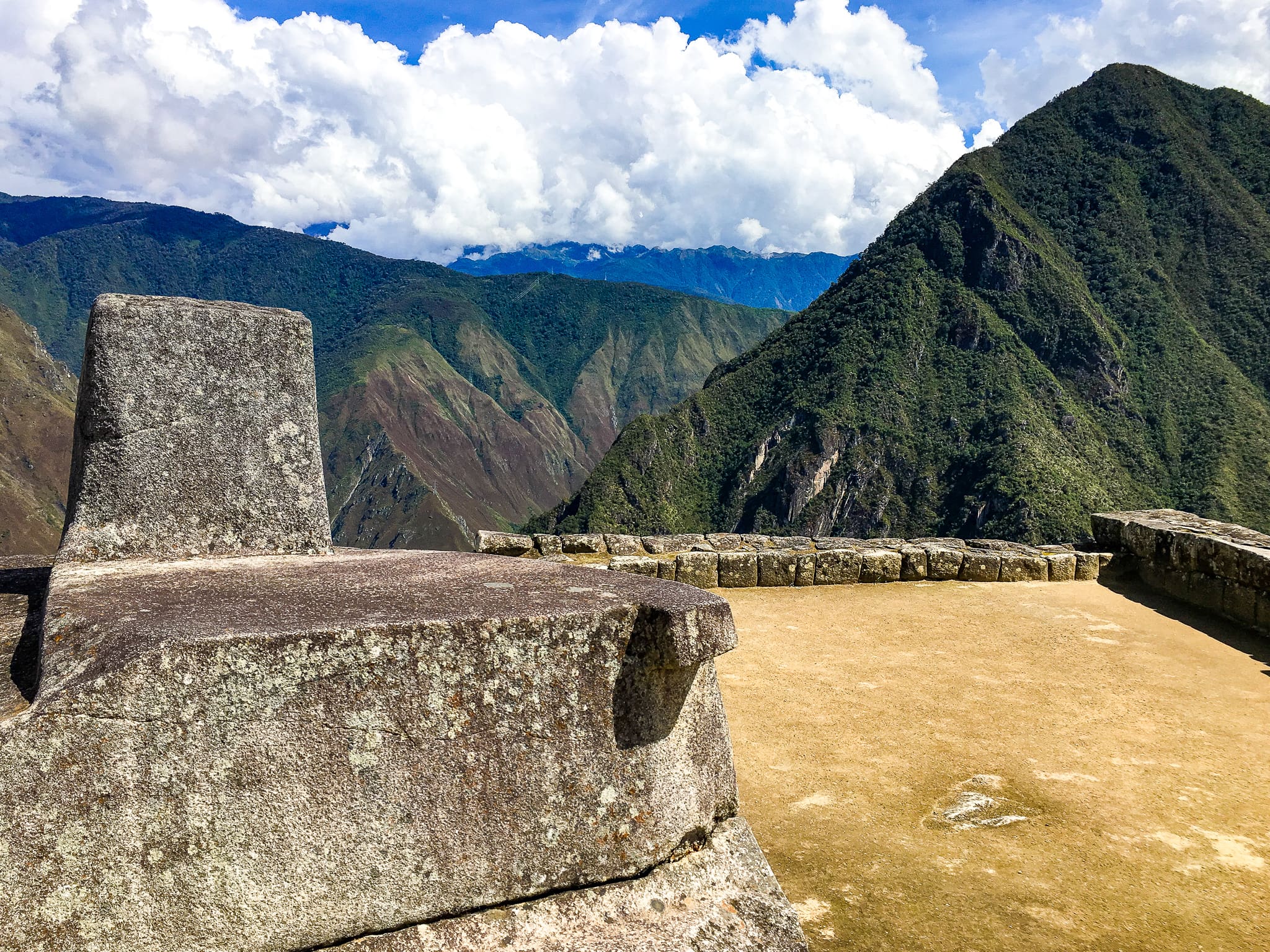
The Mysterious Stone Pillar of Intihuatana
Historians believe that the Incas were great early astronomers who observed the passage of the sun & the movement of the stars. The Intihuatana is a monolithic stone structure that stands at the highest peak of the citadel. In the Quechua language, “inti” means sun & “huatana” means to tie. Thus, the Intihuatana was created as the “hitching post of the sun.” Measuring approximately three feet high & six feet in diameter, the stone was carved in the shape of a polygon with each of its sides facing the four cardinal points of north, east, south, & west. As the sun rises & falls, the stone pillar projects shadows that help determine the time, much like a sundial or an astronomical calendar.

Experience the Magnetic Energy of the Ruins
Legends say that several stone structures in Machu Picchu contain powerful properties from the spiritual realm. In addition to the Intihuatana, the Wank’a (Sacred Rock) is another important sculpture that holds a geographical purpose. It is located at a point where the citadel ends & the pathway to Huayna Picchu begins. Thus, the Wank’a was established as a linkage between the earth & the heavens. This connection was essential in Inca culture as they relied on the blessings from their Gods & the forces of nature for survival. Take a closer look & you will also notice that the Wank’a outlines the great Yanantin Mountain in its backdrop.
What’s more interesting is the belief that there is a mystical energy that rises from beneath Machu Picchu & radiates out through this mysterious sculpture. People claim to feel a strong sense of spirituality & electromagnetism emanating from the rock. When I placed my own hands on the Wank’a surface, I experienced an aura of calm as minute vibrations charged through my fingers. It was an incredible feeling that left me somewhat renewed.
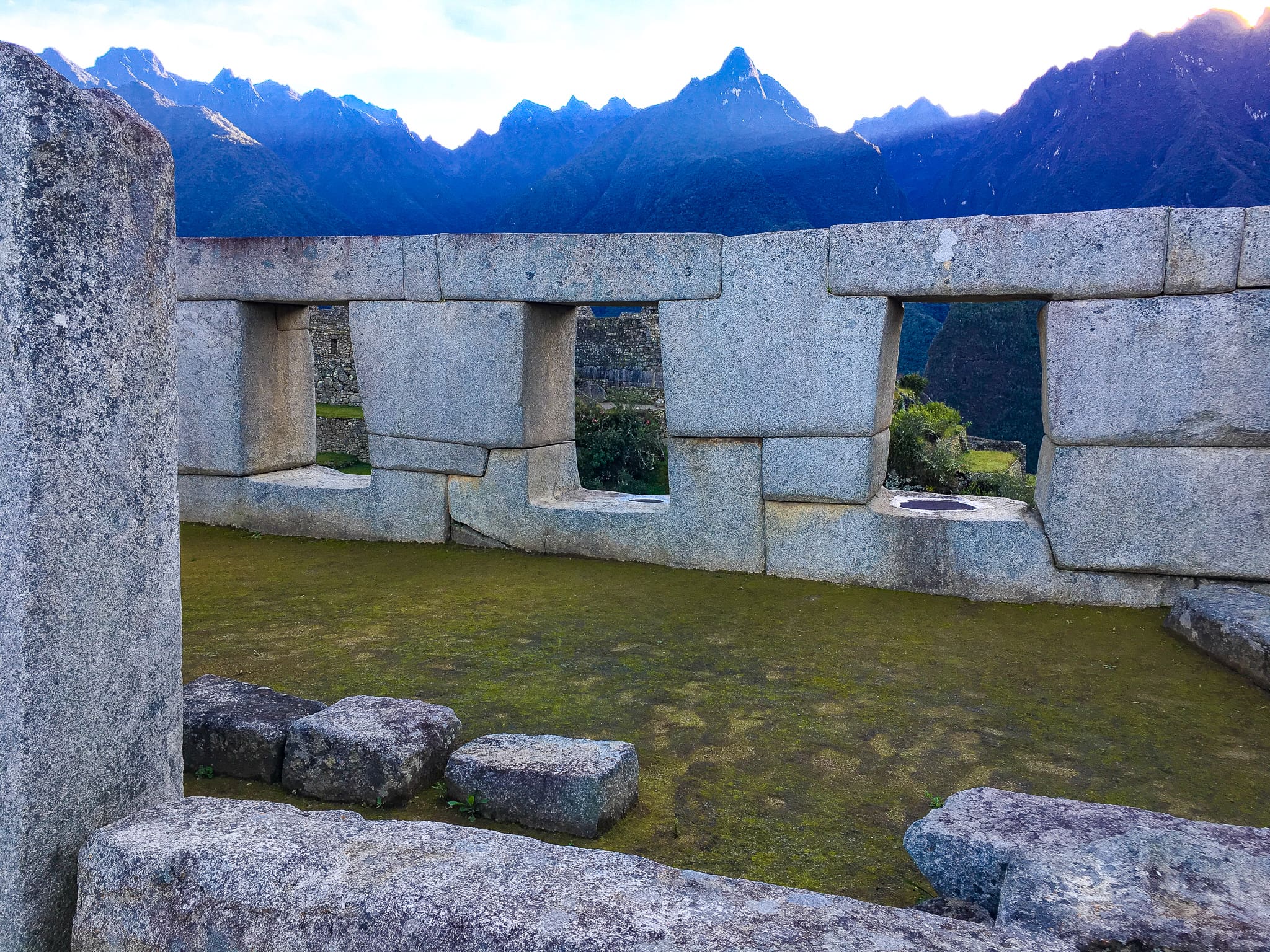
The Temple of the Three Windows
Located in the Sacred Plaza, the Temple of the Three Windows exemplifies the amazing stone masonry of the ancient Incas. Similar to Sacsayhuaman, the temple was built with enormous granite blocks that were precisely cut & aligned without the use of any special tools or mortar. This incredible structure demonstrates the Incas’ true manpower & their higher level of architectural knowledge.
The temple features three trapezoidal windows that perfectly frame the sun as it rises at dawn. Inside there is an engraved holy stone representing the three divisions of the Inca civilization: Hanan-Pacha (the spiritual world), Kay-Pacha (the earth’s surface), & the Uku-Pacha (underworld). These levels are represented by the spirit animals of the condor, puma, & the serpent, respectively.
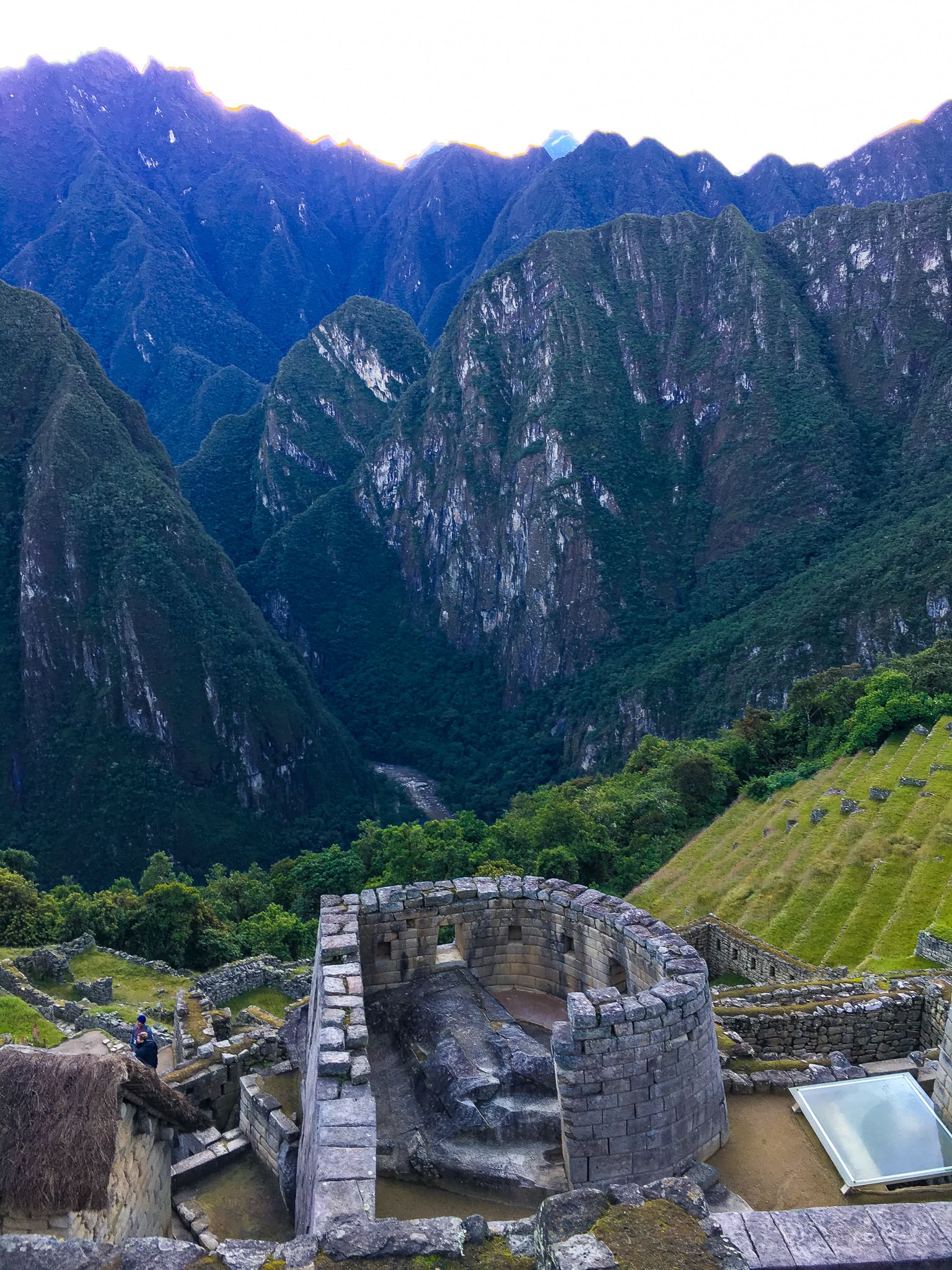
The Temple of the Sun
The Temple of the Sun is well known for its unique rounded construction that is rarely seen in Inca architecture. It is believed that priests & higher nobles led important religious rituals here. It features nine distinct alcoves within its walls that may have held ceremonial ornaments. In its center, there lies a large carved stone that possibly served as an altar for sacrificial offerings to their Gods. Another theory is that the temple functioned as an observatory for predicting harvest seasons, with its semi-circular wall & two windows that aligned to the summer & winter solstices.
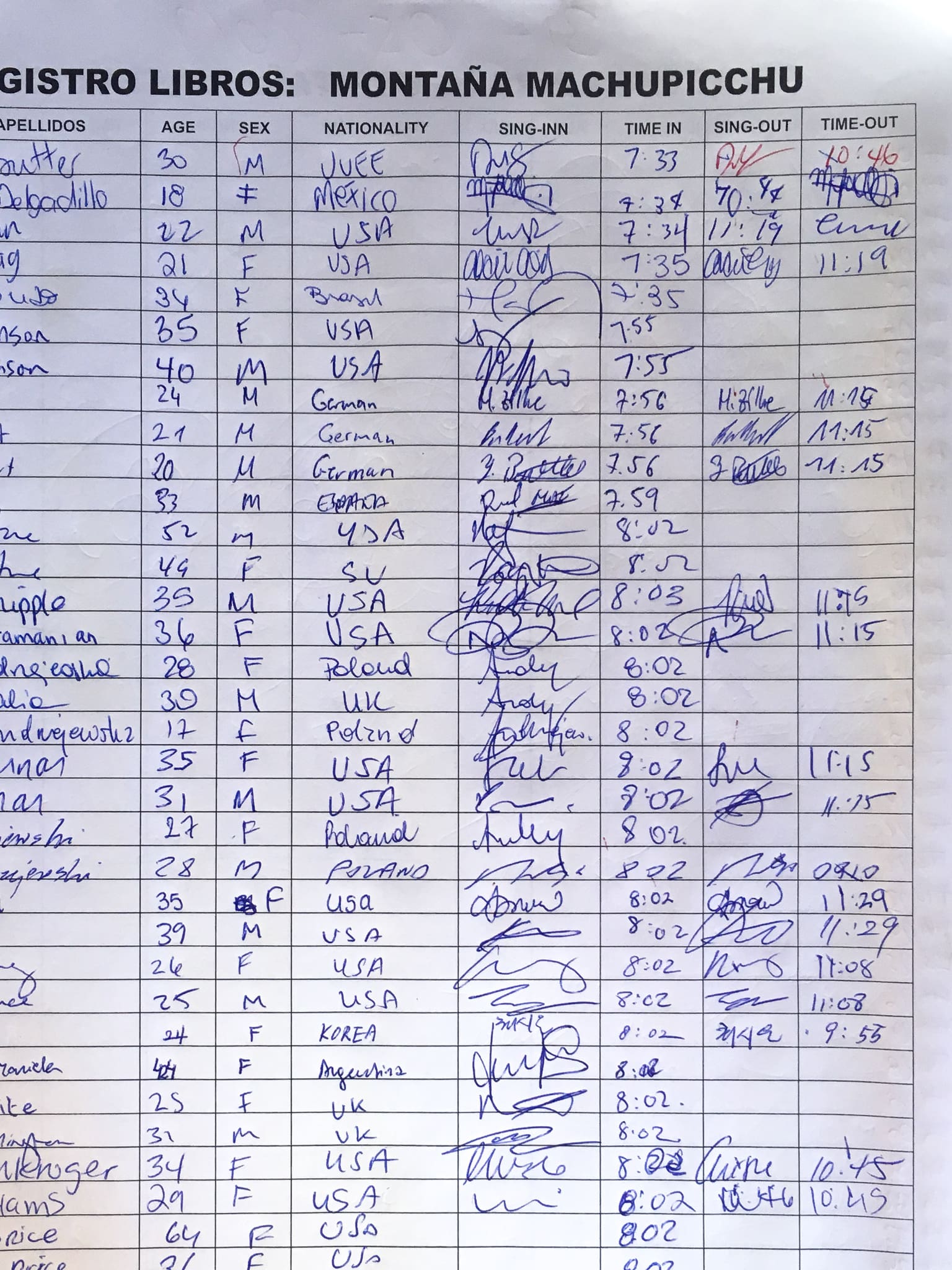
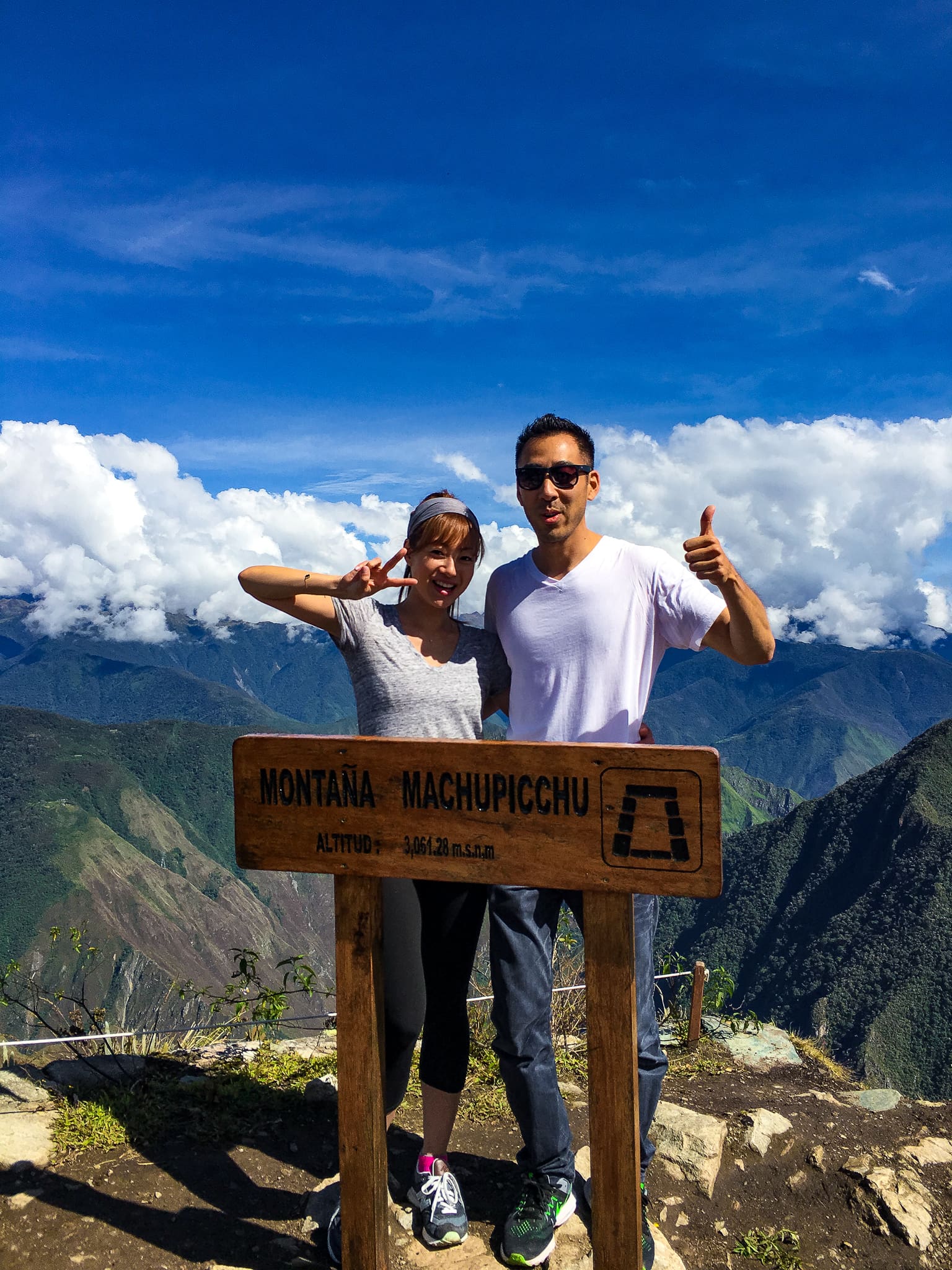

The Majestic Machu Picchu Montaña
While planning, my husband and I debated whether to hike Huayna (Wayna) Picchu or Machu Picchu Montaña. We only had time to explore just one mountain & because our primary goal was to obtain the best viewpoint, we went with the latter. Though Huayna Picchu is a shorter hike with a peak of 8,924 feet, Montaña at 10,000 feet offers the classic view of the surrounding mountain vistas & is far less traveled. Because we preferred to stay away from the crowds, it was worth the extra trek to reach Montaña’s summit.
Both hikes gain altitude gradually & steadily, so listen to your body as you get higher to the top. The majority part of the trails involve scrambling up narrow staircases & treading past exposed drop offs. Be especially careful of loose rocks or soil.
As soon as we began our ascent up Montaña, the morning fog lifted & the sun came out in full exposure. With the temperature rising, the humidity grew heavier & swarms of blood thirsty mosquitoes started attacking us out of nowhere. Being highly allergic to bug bites, my skin develops large boils that take several weeks to properly heal. Unfortunately, we failed to bring bug repellent & I left Machu Picchu with several itchy souvenirs.
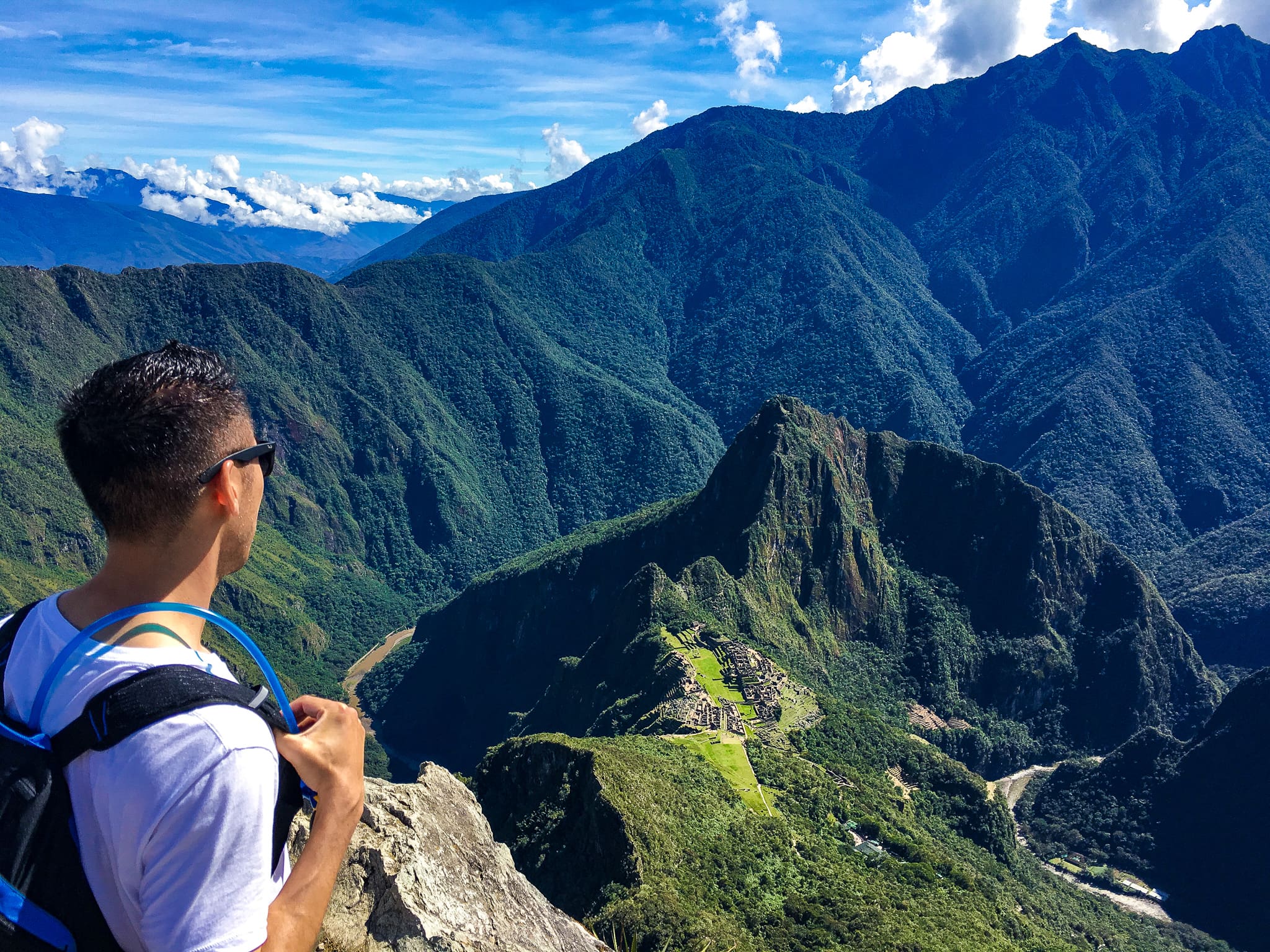
Angella’s Travel Tips
- Don’t forget to bring your passport! You will need it to purchase your entrance tickets & to identify yourself at the front gates. As you leave the site, you can also get your free Machu Picchu stamp on your passport!
- Print out your tickets ahead of time. Don’t rely on your phone to gain access since you will be in a remote area with poor reception & no Wi-Fi service.
- Like many mountainous areas in Peru, the weather at Machu Picchu can be very unpredictable. Dress in layers as the mornings may start off chilly but can quickly warm up once the sun reaches its peak. It is also a good idea to pack a lightweight waterproof jacket in case of rain.
- Because of the high elevation, the atmosphere is thinner & the sun’s UV rays can be very intense. Make sure to bring sun protection gear & sunscreen with a high SPF.
- Peruvian bugs are no joke! Be prepared & arm yourself with maximum strength insect repellent or risk getting eaten alive like I did!

Machu Picchu holds a very special place in my heart for yet another reason. Just when I thought nothing else could take my breath away, my husband got down on one knee & proposed! He always knew my dream proposal would take place on a high mountain summit. But this was completely unexpected & made our first international trip together an extra memorable one! Read all about our Machu Picchu proposal here! ❤️


Leave a comment